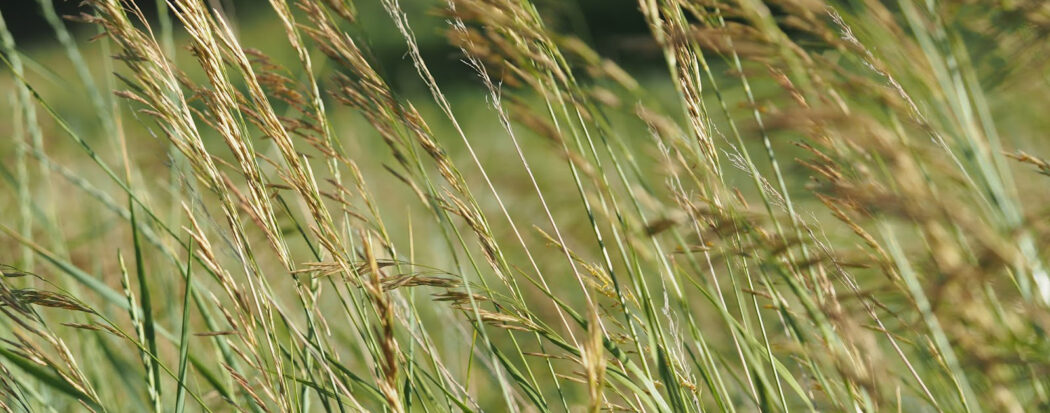9/1/2022 By Scott Bristol
President, Stillwater Community Management
scott.bristol@scmcolorado.com

Native Grass and Open Space Management
The use of native grass in Colorado front range residential, commercial and municipal development is a relatively new but heavily implemented phenomenon. “Native” simply means what vegetation grew here before people arrived and introduced irrigation, herbicides, pesticides and lawn mowers. Native grass covers over 80% of non-cultivated land in North America. Some “short” native species like Buffalograss only grow to six or so inches but still require irrigation and maintenance. This discussion focuses on the majority of native vegetation, prairie grasses, grama and western wheatgrass. These species grow to 18 inches tall, produce seed cap stalks, will perpetuate themselves indefinitely and don’t require additional irrigation or maintenance once established.
Origin of Native Focused Landscaping
In the early 2000’s, Denver Water, who provides water to 1.4 million customers and covers 355 square miles of land, set a goal of reducing per capita water usage by 22% annually by 2017. Denver Water achieved that goal. To identify outdoor savings opportunities, they commissioned a multi-participant study and in 2011 the Sustainable Landscape Conversion Design and Irrigation study was delivered.
The core finding of the study was that Kentucky Blue Grass was regularly installed in most public and private common areas and that transitioning low traffic areas to native and sustainable vegetation, huge water savings could be achieved. The study further concluded that installing or converting to native vegetation would decrease the amount of pesticides and herbicides introduced into the fresh water system, reduce the cost of treating fresh water, decrease noise and air pollution from maintenance activities, provide habitat for wildlife and drastically reduce maintenance/utility costs for owners. The benefits were vast with the only negative being many people have a historic preference to the look of manicured blue grass turf to native plants.
KEY POINT FOR HOMEOWNERS IN PLANNED COMMUNITIES: Native, sustainable and Xeric landscape in common areas and open space is now MANDATED under the Denver Water usage reduction plan. Developers would very much like to install blue grass turf everywhere, turn on the sprinkler clock and call it good. It is cheaper than the cost of nurturing native over several season to maturity and no one with outdated perceptions of “what looks good” is going to complain. A project proposal with mainly blue grass turf common and open spaces is not going to get approved. Colorado State University professor Tony Koski published Reduced Maintenance Grass Areas for HOA’s as a short, common sense guide for HOA’s struggling to help educate homeowners that do not understand the reason for, and benefits of native grass open space.
Native Maintenance
While the 2016 study defined incredible benefits of replacing blue grass turf with native species, it did not describe how native grasses should be installed, nurtured to maturity and maintained long term. Without any guidance, a critical, catastrophic misconception maintenance contractors and property owners have is that while you don’t NEED to mow native grasses to the ground, you COULD if you wanted to. Native prairie grass is like any other plant, it has roots, green leaves and produces seeds to renew itself. If you remove the green leaves during growing season, the plant can’t photosynthesize and if you remove the seeds before they mature, the plant can’t replace older plants and spread. Without these two critical components of a plant’s life cycle, the plant will die.
Updates to the plan over the last several years have tried to address the lack of detailed information regarding plant selection, installation, maturation, weed mitigation and maintenance. The Arvada Park Maintenance Contract Technical Specification from 2010 says “All native areas shall be mowed every two weeks and kept at a minimum of 4 inches and maximum of 6 inches”. If followed, this specification would kill native species in a few years. The current Arvada Park Maintenance Standard from 2022 says “native areas shall have a buffer along sidewalks, property lines, streets and paths mowed 5 times per season.” It further states “Where possible, large stands of native will be mowed once per season after the growing season, usually after the first hard frost”. This reflects current best practices for native area prairie grass maintenance.
Fire Mitigation and Mowing – Boulder County Grassland Management
Boulder County has undertaken a large-scale study relating to fire mitigation and produced best practices for Grassland Management in Boulder County after the Marshal Fire. Major findings relating to native prairie grass mowing are as follows:
Benefits: Beauty band type mowing can create a buffer around a community and along roads and paths. Beauty banding creates fire breaks and better access for fire responders. Mowing of large areas should be done in the fall at the end of the growing season to reduce fire fuel buildup before the winter high wind season.
Drawbacks: Largescale, clear-cut type mowing to keep tall grasses short is impractical and expensive. Regular mowing of large areas stresses vegetation, kills native species, introduces invasive species, decreases soil stability and lowers tolerance to droughts, all actually increase fuel for fire.
Denver Water has a fire mitigation plan that specifically states healthy NON MOWED native grasses are the most effective fire mitigation vegetation for large open spaces: “Maintain healthy native grasses, that are not mowed frequently to benefit open spaces and mitigate the potential of fires. Taller grasses hold moisture in the soils that keep plants from becoming dry earlier in the season, reducing fire danger in open spaces. If mowing occurs in open spaces, invasive species will encroach into an area and may have a high tendency to catch fire, making open space more vulnerable to fire.
Invasive Weed Management – Russian Olive Trees
One of the most detrimental, invasive species in Colorado is the Russian Olive Tree. Russian Olives consume over ten times the amount of water native tree species use and will out-compete and push out native trees and useful, cleansing plants such as common cattails. Russian Olives will proliferate along waterways and ponds and make it difficult to access the body of water and drastically lower water levels required to keep the body of water clean and life sustaining. The Colorado Department of Agriculture has categorized the Russian Olive as a noxious invasive weed and by State law are required to eliminate the species in by 2028. There is a county by county Noxious Weed Program to support elimination of invasive species. Private property owners can sign up for the program and in Jefferson County will remove Russian Olives and other species at no cost to the property owner.

You must be logged in to post a comment.